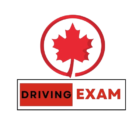Parking – G1 Practice Test

Time’s up
Master Ontario parking rules with Parking, a free G1 practice test designed to help you understand all aspects of safe and legal parking. This quiz covers topics such as parallel parking, angle parking, perpendicular parking, parking near fire hydrants, no-parking zones, and parking on hills—essential knowledge for passing your G1 test.
This quiz is part of the full G1 practice test series. For complete preparation, also review related quizzes:
All questions are based on the latest Ontario Driver’s Handbook, ensuring accurate and up-to-date preparation for your G1 test. For official information, visit the Government of Ontario handbook: (ontario.ca/handbook).
Start the quiz below to practice proper parking techniques, understand legal parking rules, and gain confidence for your G1 knowledge test.
